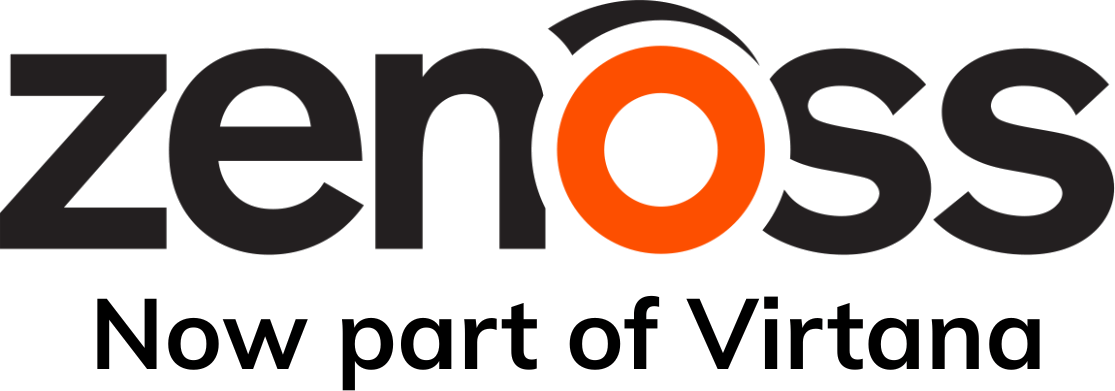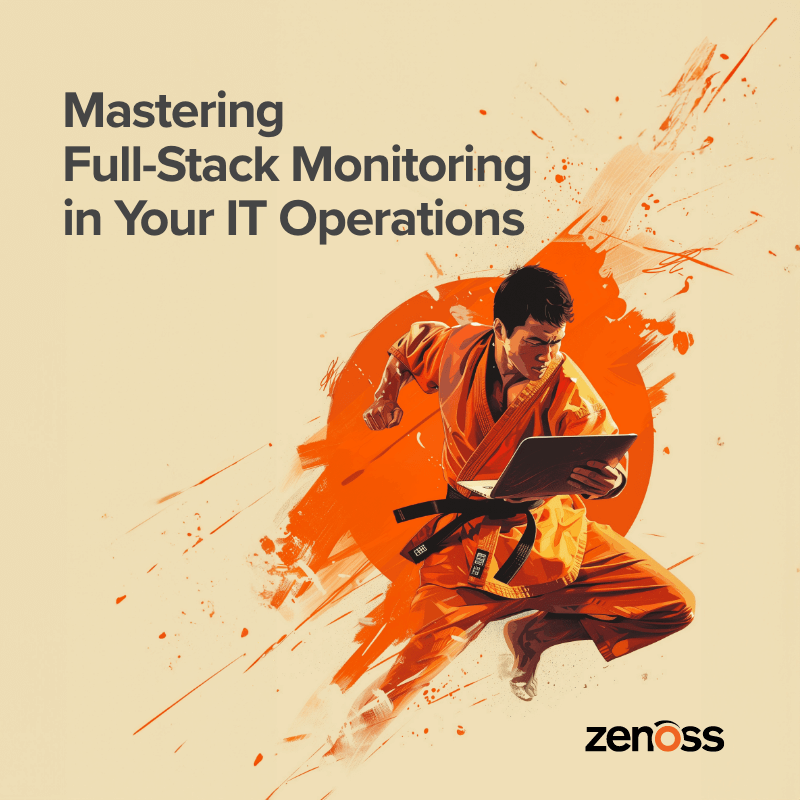The absence of comprehensive monitoring tools in today’s complex IT environments introduces significant challenges and risks. Without the ability to oversee the entire stack, organizations may run into an undetected performance issue, leading to potential downtime. According to numerous studies, that can cost between $5,600 and $9,000 per minute.
Fortunately, full-stack monitoring emerges as a worthy solution.
By offering a holistic view of an organization's IT infrastructure, it ensures every layer — from the application down to the network — is under constant surveillance. This comprehensive insight is essential in preemptively identifying and addressing potential issues before they escalate, thereby safeguarding system integrity and reliability.
Here, we’ll walk through the ins and outs of full-stack monitoring. By understanding its key components, organizations can enhance IT management for greater efficiency, performance, and customer satisfaction.
Understanding Full-Stack Monitoring
Full-stack monitoring is an integral part of modern IT management. It combines various techniques in one process, such as real-user monitoring, network performance monitoring, synthetic monitoring, and so on.
Compared to traditional monitoring, it covers the entire stack from top to bottom. That includes applications, databases, servers, cloud infrastructure, and more. This approach not only monitors the health of each component but also tracks how they interact and affect the overall application performance and user experience.
Why does this matter? In today’s dynamic environments, applications are often supported by a vast and complex array of systems, each interlinked and evolving. Without a comprehensive platform that encompasses the entire stack, managing and optimizing performance becomes a near-impossible task. Fortunately, full-stack monitoring empowers organizations to map these relationships and dependencies in real time.
Components of the Full-Stack Approach
Several components and metrics ensure a thorough and effective monitoring strategy. These include:
- Application performance.
- Server health.
- Network latency.
- User experience indicators, among others.
Tracking each metric across all layers — from the front-end application layer down to the physical infrastructure — can provide valuable insight into overall system performance. Likewise, it can help identify areas for improvement. This holistic view is crucial for maintaining optimal operation and ensuring that IT infrastructure aligns with business objectives.
Full-Stack Monitoring vs. Full-Stack Observability
While full-stack monitoring provides a comprehensive overview of IT infrastructure, it is distinct from full-stack observability.
Observability extends beyond monitoring to include the ability to infer the internal states of systems based on external outputs. It encompasses logs, metrics, and traces, offering a more granular view of system behavior and performance.
Full-stack monitoring is a critical component of observability, providing the foundational visibility needed to support deeper analysis and understanding.
The Role of Full-Stack Monitoring in Modern IT Environments
In an era where digital platforms and services underpin business success, maintaining high availability and optimal performance is non-negotiable. Full-stack monitoring provides the oversight necessary to achieve these objectives, enabling IT teams to detect and resolve issues before they impact end users.
This proactive approach to system management not only enhances reliability but also supports continuous improvement efforts, ensuring that IT infrastructure evolves in alignment with business needs. With systems and applications constantly changing and user demands growing, speed is crucial to success. Full-stack monitoring enables organizations to swiftly act on real-time insight, which can lead to numerous benefits.
For example, with a platform like Zenoss Cloud, teams can:
- Reduce downtime by 50%.
- Improve mean time to repair (MTTR) by 85%.
- Increase automation by 70%.
- Reduce cloud costs by 30%.
Full-stack monitoring also plays a crucial role in enhancing business agility. By understanding the interdependencies within their IT infrastructure, companies can implement changes with confidence, ensuring updates and new deployments enhance application performance without introducing new risks. This is critical for maintaining competitive advantage, making full-stack monitoring an indispensable tool for modern IT management.
Implementing a Full-Stack Monitoring Solution in Your IT Ecosystem
Implementing full-stack monitoring requires a strategic approach that emphasizes scalability, efficiency, and interoperability. Selecting tools that can seamlessly integrate with your existing infrastructure while providing the flexibility to scale with your business is crucial.
Automation plays a key role in this process, enabling continuous monitoring and real-time insights without the need for manual oversight. This ensures that your IT team can focus on strategic initiatives rather than getting bogged down in routine tasks.
Deployment demands careful planning and execution. The process should work as follows:
- It begins with a thorough assessment of your current IT infrastructure to identify key components and potential integration points.
- Following this, a phased deployment strategy can help ensure a smooth transition, minimizing disruption to existing operations.
- Lastly, tuning is essential to keep the monitoring system aligned with evolving business needs. This includes updating to reflect new applications or infrastructure changes, ensuring the system remains effective over time.
Customizable monitoring solutions are essential for adapting to the unique requirements of different IT environments. No two organizations are the same, and the ability to tailor monitoring tools to specific needs is a significant advantage. This customization can range from setting specific thresholds for alerts to integrating with proprietary systems or applications.
Navigating the Challenges of Full-Stack Monitoring
One common hurdle is ensuring that the monitoring tools seamlessly integrate with the diverse components of an organization's IT infrastructure. This requires a solution that is both flexible and compatible with a wide range of systems, from legacy platforms to the latest cloud technologies. Overcoming this challenge is essential for achieving a comprehensive view of the entire IT stack.
Another significant challenge is managing the sheer volume of data generated by full-stack monitoring tools. With every component of the IT infrastructure producing logs, metrics, and telemetry data, organizations can quickly become overwhelmed. The key to navigating this challenge lies in implementing effective data management strategies. By focusing on the most relevant information, IT teams can avoid data overload and concentrate on issues with the biggest impact on performance.
Key Features of an Effective Full-Stack Monitoring System
An effective full-stack monitoring system will provide several essential capabilities, such as:
- Real-time analytics that enable IT teams to solve problems as they arise.
- Automation to optimize resource utilization and streamline response protocols.
- Artificial intelligence (AI) for more sophisticated data analysis, pattern detection, and behavioral predictions.
- Machine learning (ML) models to learn from historical data and optimize reliability over time.
Scalability is also a crucial feature of an effective full-stack monitoring tool. As organizations grow and evolve, their IT infrastructure becomes more complex, necessitating solutions that scale accordingly. An effective system must be able to accommodate new components, technologies, and volumes of data without compromising performance.
Zenoss Cloud: AI-Driven Full-Stack Monitoring
Zenoss Cloud emerges as a premier full-stack monitoring solution, distinguished by its AI-driven approach. Our platform is designed to integrate seamlessly with an organization's IT infrastructure, providing comprehensive monitoring across the entire stack. By leveraging advanced AI and ML algorithms, Zenoss Cloud offers unparalleled insights into system performance, enabling proactive issue identification and resolution.
Moreover, our platform is engineered to work harmoniously with a wide range of IT components, from traditional on-premises systems to modern cloud infrastructure. This flexibility allows organizations to achieve a holistic view of their IT operations, regardless of the complexity or diversity of their environment.
Extending beyond simple health checks, the platform offers real-time analytics, dynamic service mapping, and predictive capabilities that anticipate potential issues before they impact operations. With Zenoss Cloud, organizations can elevate their IT operations, ensuring that they are not only reactive to issues as they arise but also proactive in preventing them.
Elevate your IT operations with Zenoss Cloud and unlock the full potential of your technology investments by requesting a demo today.











